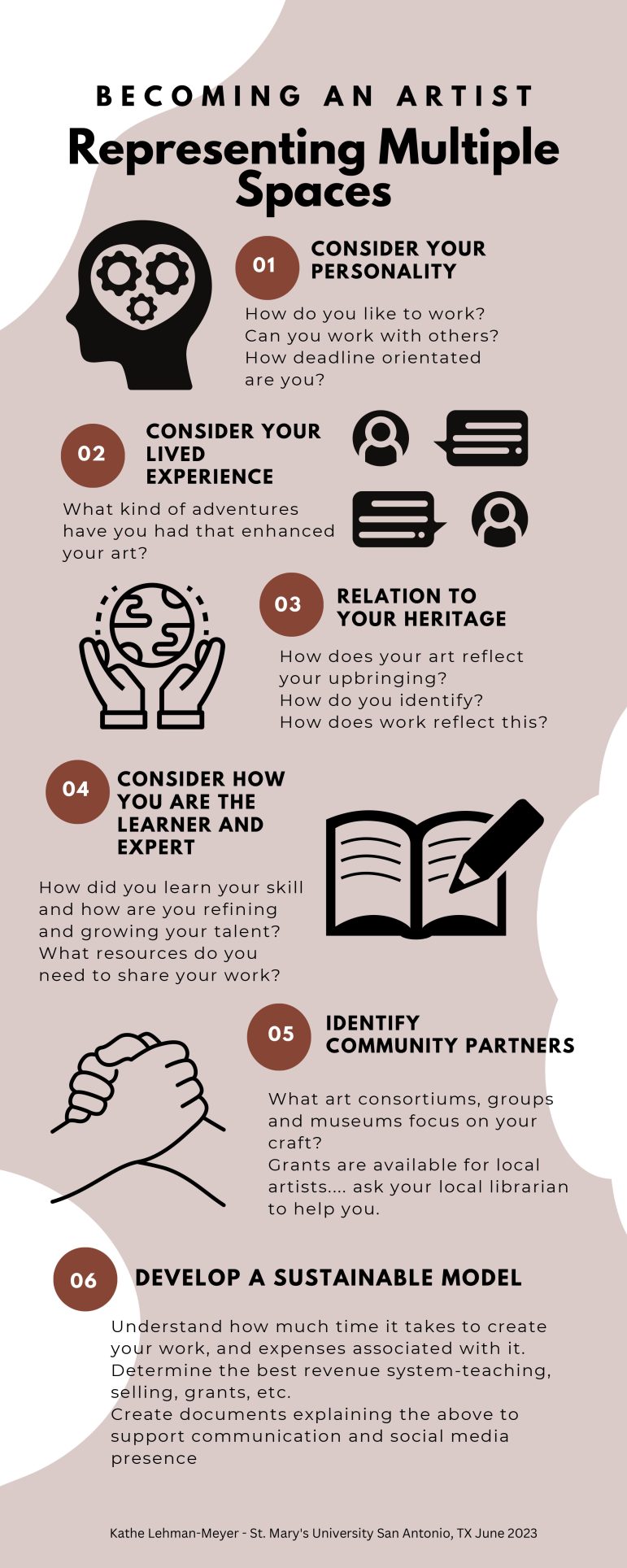By Carlton Abernathy, Kathe Lehmen-Meyer and Vera Walker Hawkins
El Paso is extremely attractive for creatives. In 2014, the El Paso, Texas workforce included more than 8,500 creatives generating $641 million in revenue, according to the city’s Museums & Cultural Affairs Department (MCAD) Creative Vitality Index.
We met with two local artisans – ceramic artist Phillip John Romero and textile artist Cindy Gutierrez-Krapp – who have discovered economic sustainability by drawing on their personal history in their creative work and are supporting the community in the process.
Romero attributes ceramic work to saving his life after serving in the Army and doing two tours of duty in Iraq.
“I got out on a medical discharge, nobody would hire a disabled veteran,” he says “So for a whole year I couldn’t find work. In 2011, I went back to school to study at UTEP to be a graphic designer and I hated it. In that process of pursuing my BFA, I found ceramics and changed my major almost immediately. The rest is history.”
Now, he offers ceramics classes seven days a week at PJ Romero Artworks. He also provides live demos via social media, and sells custom pieces.
Kerry Doyle, Director of the Stanlee and Gerald Rubin Center for Visual Arts at the University of Texas El Paso says Romero is using contemporary craft to build a community space in his little shop in the Chamizal neighborhood.
“If you go to Philip’s studio on any given day, you might see someone who’s a monolingual English speaker in her seventies taking class next to a bilingual teenager, and they’re both using clay, and they’re both having conversations. They’re both sort of engaging in this community that otherwise wouldn’t happen in the ways that we live our daily lives,” Doyle says.
Artist, weaver, bead-maker, and hat maker Cindy Gutierrez-Krapp began learning beading and weaving as a way to explore her indigenous roots.
Guietterez-Krapp grew up thinking she was Mexican-American. She lived in El Paso until the age of seven when her family moved to California. She went to New York City to attend fashion school. After completing her degree at the Fashion Institute she stayed and worked in the city for many years before returning to El Paso. A DNA test revealed she had Yaqui, Navajo and Apache in her lineage.
Gutierrez-Krapp is constantly researching the symbolic references in Navajo weaving. “It is embracing your indigeneity. And as for my beadwork, it’s telling stories. Like right now I’m working on two, bead weaving pieces that speak to migration and pre-Colombian trade routes. Everything just speaks to those stories, migration,” she says.
Moving back to El Paso allowed her to better explore the artistic crafts associated with that heritage. She opened a small studio-store, Aghaa’ Hat Company on Montana Ave just outside of Downtown. On any given day, patrons may find her molding hats from reclaimed beaver and rabbit pellets or designing clay beads to add to her weaving. She represents other artists and sells their original pieces. She also offers workshops and has an apprentice learning the milliner craft.
Craft crossing borders in contemporary arts
While recently contemporary craft in the United States has been more elevated, the relationship in Mexico to this work is different according to Doyle.
“In Mexico, even more than the United States, craft has tended to be sort of relegated to a kind of second class conversation in contemporary art. There’s this idea that there are people who are craftspeople who do sort of folk work and things like that, that you might purchase on the street or in a folk art craft store. And then there’s contemporary artists that are doing serious work.”
In the United States, Doyle believes that barrier for craft as contemporary art was broken in the seventies and eighties, thanks to places like the Houston Center for Contemporary Craft or CraftContemporary in Los Angeles.
So now when Borderland artists take up craft practices, it’s a way of connecting with traditional practices in their work.
“I think that craft practices have become really important here on the border,” Doyle says. “They’re contemporary expressions of being here and people are using those crafts to address that in different ways.”
This is important work according to Doyle, “Contemporary artists use their work to address contemporary issues. So people are using craft, to talk about identity that sort of extends across the borders.”

This story was produced as part of the 2023 Dow Jones News Fund Multimedia Training Academy hosted at UT El Paso. The academy trains college and university journalism professors from Hispanic-serving institutions and Historically Black Colleges and Universities in media creation and editing to help them prepare their students for multimedia career opportunities.


